Tartu has been a revered cultural city through the centuries
From this university emerged the first national elite, the first newspapers and cultural societies began their activities here, the national theater was born, and the first national song festival also took place. In addition to the University of Tartu, the city’s history and spirit are preserved by various wooden neighborhoods, historic buildings, diverse museums, and much more.
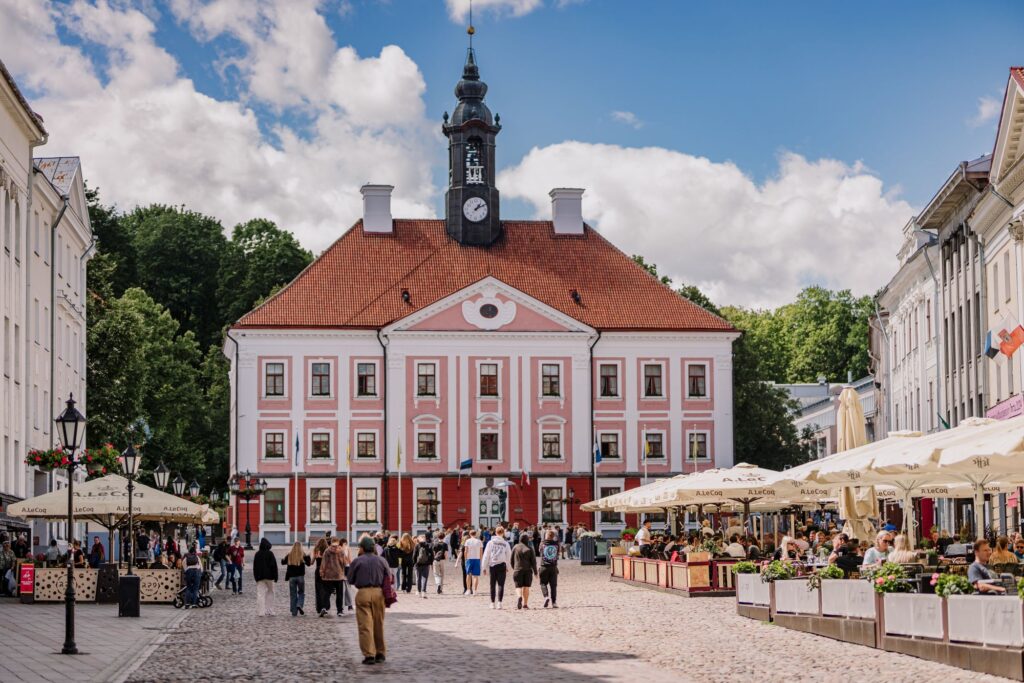
Town Hall Square
The trapezoidal central square of the city, Tartu Town Hall Square, is surrounded by neoclassical buildings. In the 18th century, it was home to the city’s most important market, known as der Grosse Markt or the Great Market. The square features the early neoclassical Tartu Town Hall, the third building on this site. Since 1998, a fountain with kissing students, which has become a popular meeting spot, adorns the front of the Town Hall. Every day, the chimes of the Town Hall’s tower can be heard, played by 18 bells, with 16 of them cast in the Royal Bell Foundry of the Netherlands for the 15th anniversary of the chimes, and the remaining two made in Karlsruhe, Germany. Both Town Hall Square and the Town Hall are fascinating landmarks, especially for their architecture. Here, you’ll also find the Leaning House, the most peculiar and eye-catching building on the square’s northern side, often referred to as Tartu’s Pisa Tower due to its noticeable tilt. The Tartu Art Museum is housed within this building. At the river-facing end of the square, a yellow National Geographic frame, painted pink as part of Tartu 2024, symbolizes Tartu as one of 21 must-see places in Southern Estonia.
European Capital of Culture Tartu 2024
Tartu, along with Southern Estonia, is the European Capital of Culture in 2024! This is a major event for all of Estonia, offering unique cultural experiences both in Tartu and across Southern Estonia. The year-long program is inspired by the creative concept “Arts of Survival.” Additionally, Tartu 2024 aims to take steps towards an environmentally sustainable future, ensuring that all events are organized with environmental consciousness in mind.
The Capital of Culture program features concerts, parties, exhibitions, and much more—Tartu will be filled with love in “Kissing Tartu,” fiery debates in “Naked Truth,” and during the summer, you can enjoy the cityscape at the “Car-Free Avenue.” The program will bring over 1,000 diverse events to the city. Explore the events of Tartu 2024.
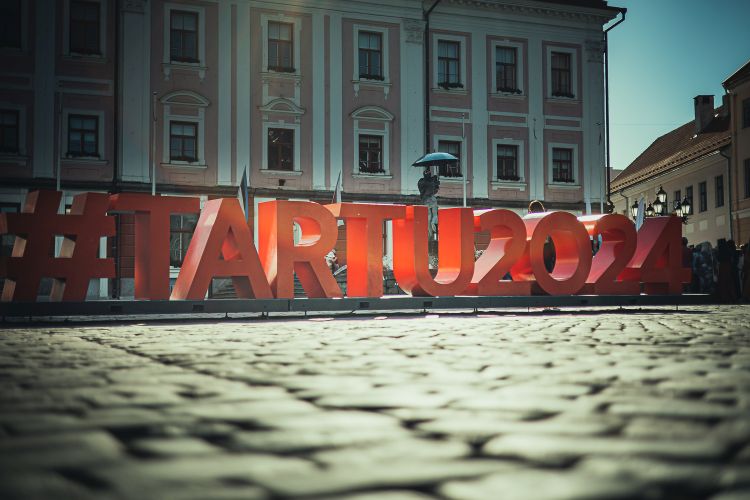
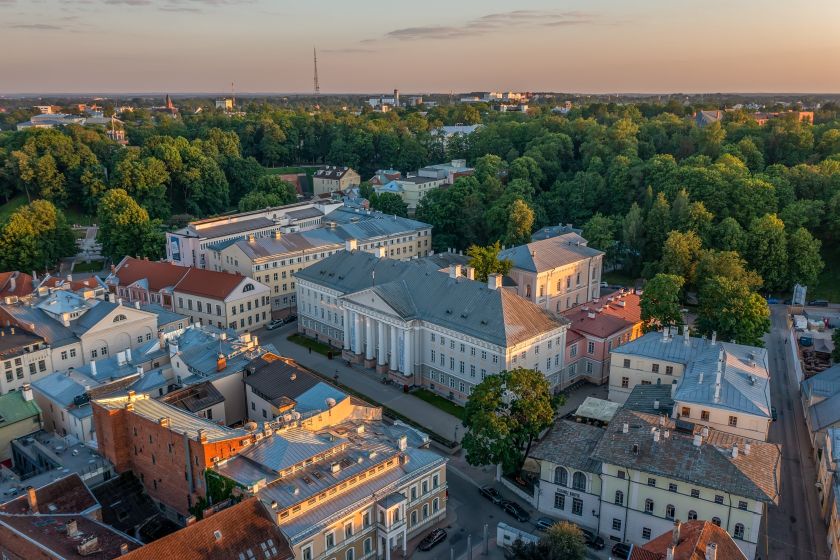
University of Tartu Buildings
The development of Tartu as a cultural city has been significantly influenced by the University of Tartu, which was founded in 1632. The main building of the university is an undeniable architectural gem. Constructed between 1804 and 1809 based on a design by Johann Wilhelm Krause, it was officially inaugurated on July 3, 1809. Since then, the main building’s assembly hall has played a crucial role in all major university events and celebrations. The hall also hosts conferences and concerts, thanks to its excellent acoustics.
Visitors can explore the neoclassical assembly hall and the historic student lock-up on the attic floor through the University of Tartu Art Museum. The University of Tartu Museum, located in the cathedral, showcases the history of science and higher education from the 17th century to the present. Under the university’s aegis, you can also visit the Tartu Old Observatory, the Old Anatomical Theatre, the University of Tartu Botanical Garden, and the Natural History Museum, which is located a bit farther from the city center.
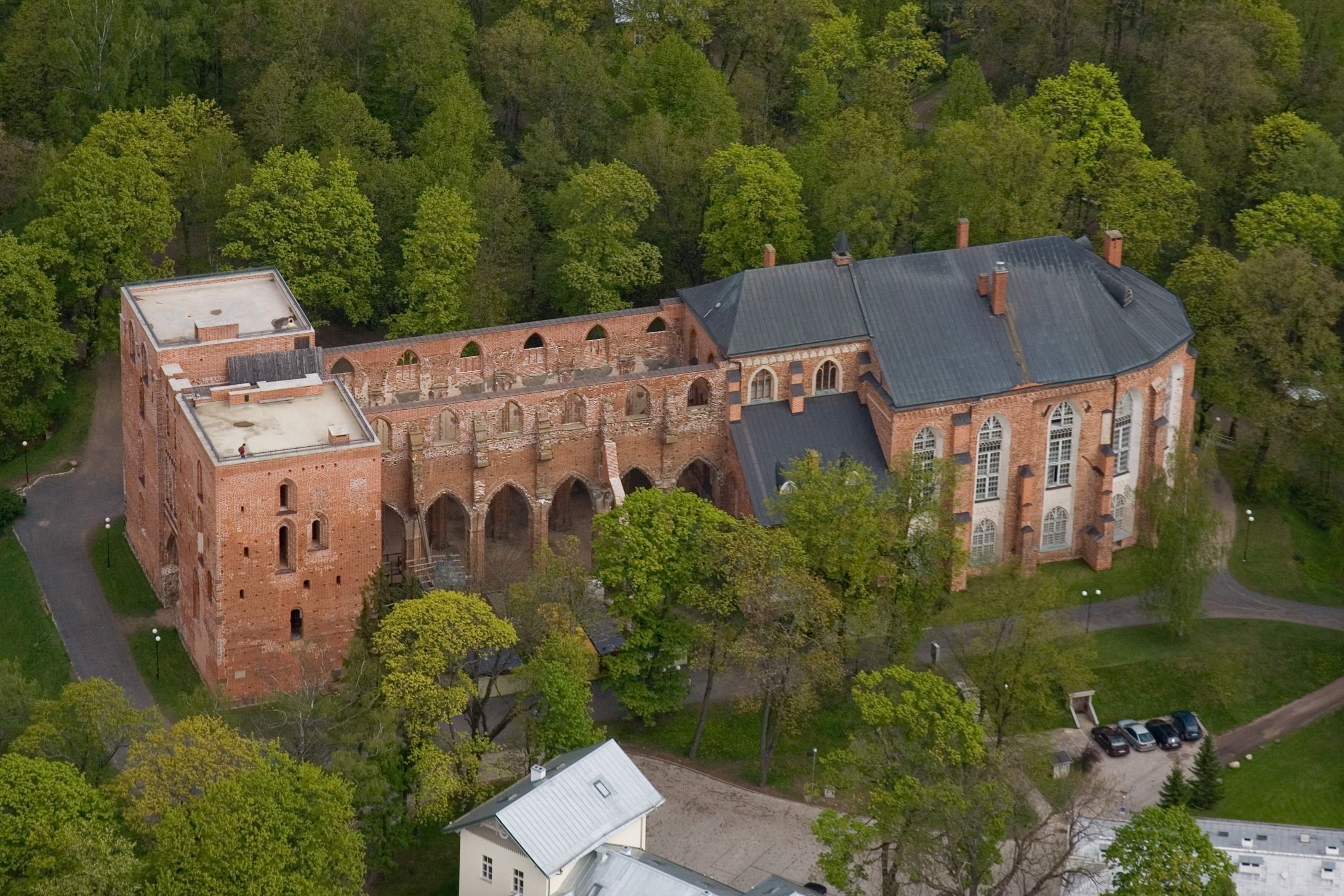
Toome Hill
If you want to stroll through the medieval center of the Tartu Bishopric, you should head to Toome Hill (Toomemägi). In ancient times, this was the site of the earliest Estonian fortress, Tarbatu, and later the center of the bishopric with its bishop’s castle and cathedral. After the Great Northern War, the bastions built during the Swedish period were leveled and the bishop’s castle was destroyed. In the early 19th century, Toomemägi became part of the university’s domain, and a park and university buildings were established there. It is now the heart of the university campus, with the University of Tartu Museum located in the ruins of the cathedral.
Tartu Cathedral is one of the largest and the only medieval church with two towers in Estonia. Construction of the church began in the 13th century and continued into the early 16th century. Since the spring of 2005, the towers have been open to visitors.On Toomemägi, you’ll also find the Devil’s Bridge (Kuradisild), one of the few remaining concrete bridges from the early 20th century. The bridge, built in 1913 for the 300th anniversary of the Romanov dynasty, was dedicated to the memory of Alexander I. Its name might derive from its contrast with the nearby lighter English Bridge (Inglisild), which was completed in 1838. The name “Devil’s Bridge” is thought to reflect the name “English Bridge” because Toomemäe Park was designed in the English style.
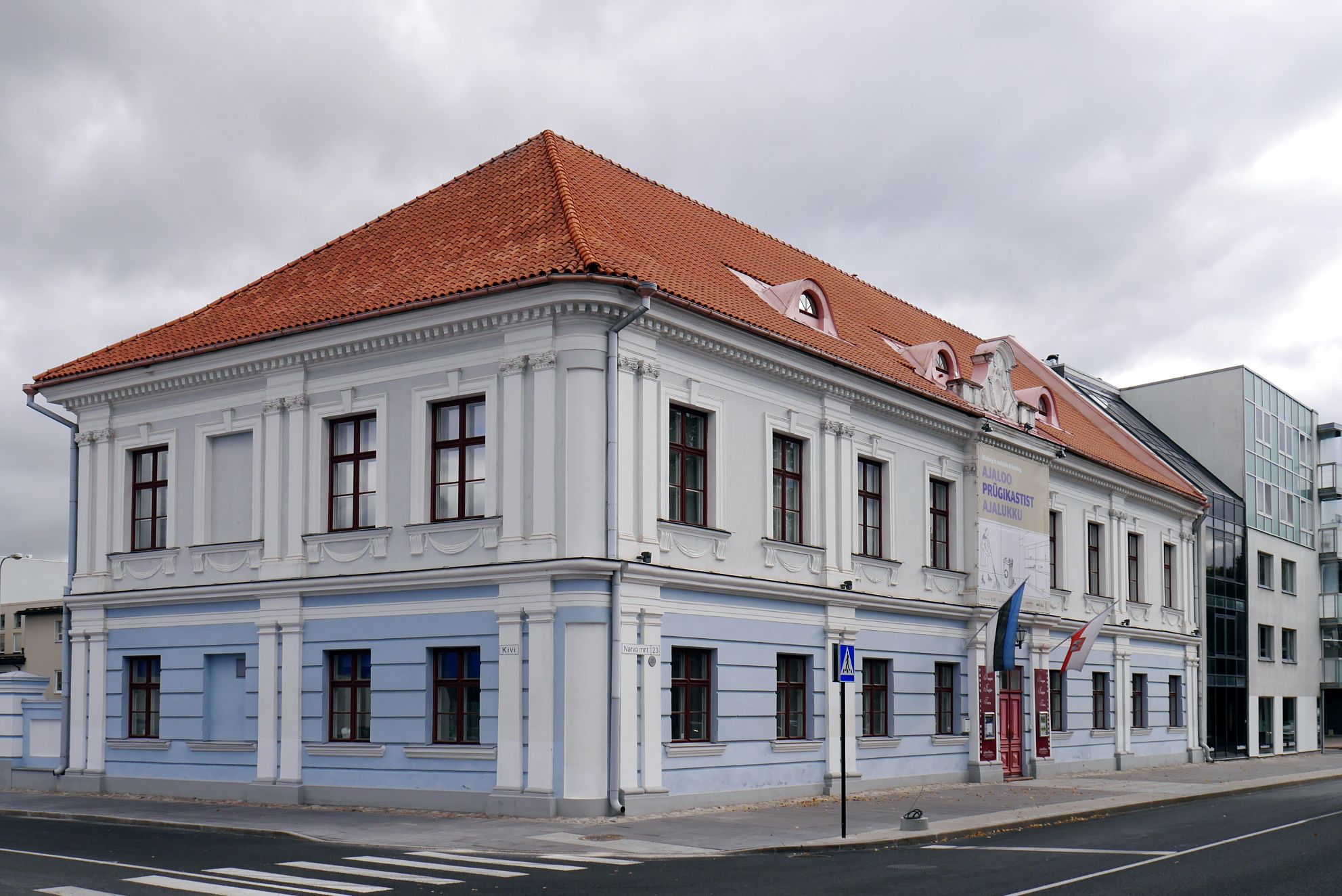
Tartu City Museums
Tartu is considered to be the city of museums as every cultural enthusiast can find something to their taste here. In the Tartu City Museum, you can take a closer look at the city’s diverse history, find an archaeological collection reflecting Tartu’s older time, a photo collection showing the spatial development of the city as well as archive and object collections that consist of over 158 thousand preserved objects. In addition, there are establishments operating as branches of the City Museum: The 19th Century Tartu Citizen’s Home Museum, which introduces a citizen’s house in the 1830s with Biedermeier style interior. The museum is housed in one of Tartu’s oldest remaining wooden dwelling houses, built in the 1740s; the KGB Cells Museum offers an insight into the cells of Tartu’s NKVD/KGB detention prison; the Oskar Luts Home Museum invites you to visit the writer’s home in Tammelinn; the Tartu Song Festival Museum presents the tradition of Estonian song festivals and Tartu’s role in its formation.
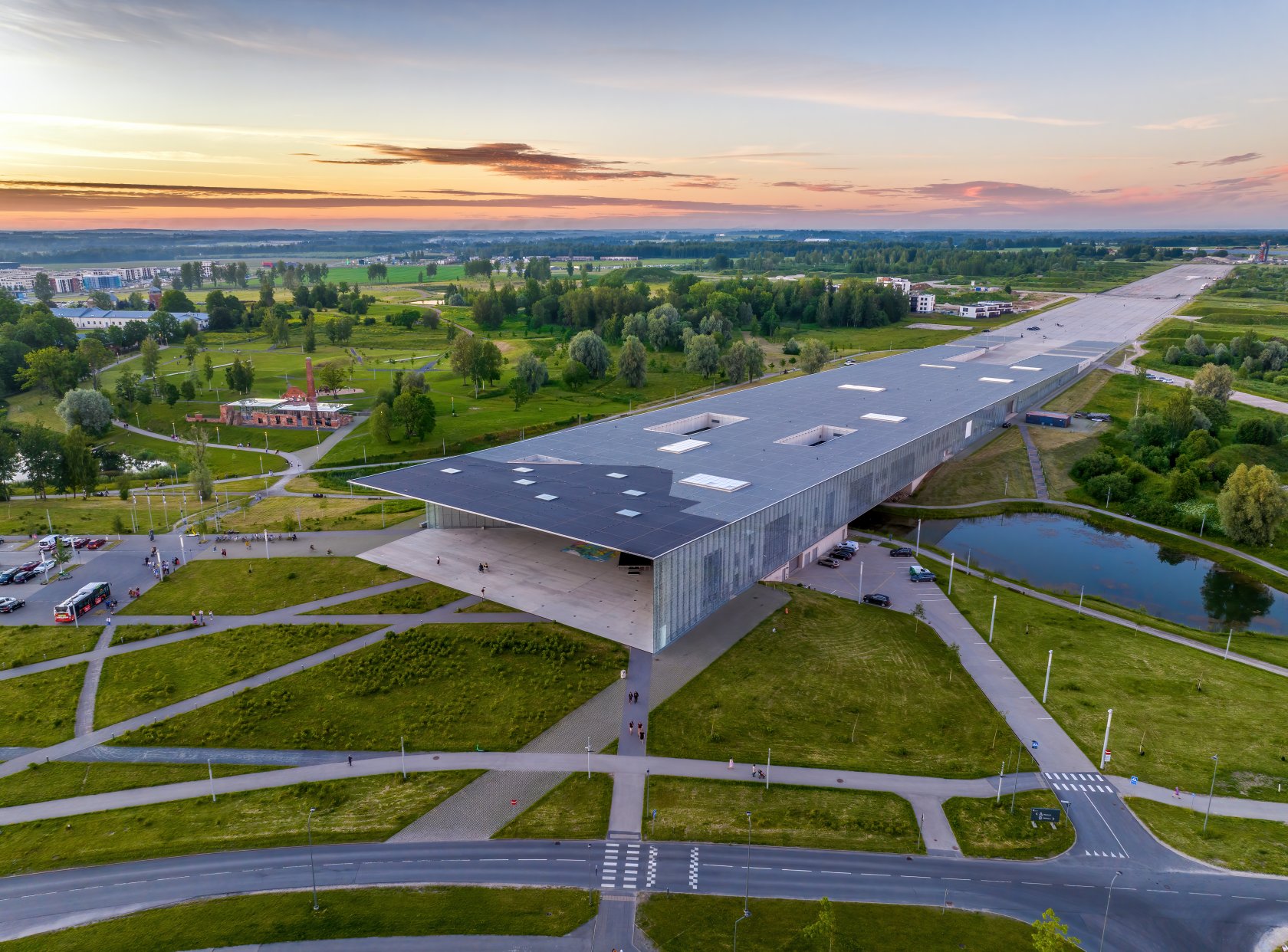
Estonian National Museum
Naturally, the Estonian National Museum, founded already in the year 1909, is considered to be Tartu’s most spectacular pearl. In 2016, the museum received its new home which is located only two kilometres from the city centre. In addition to the new main building, the museum complex encompasses the centre of the old Raadi Manor, the lake, the dendro- and theme park area as well as the runway of the partially preserved military airbase. On the exhibition area of 6000 m2, you can find permanent exhibitions about the cultural history of Estonian and Finno-Ugric peoples as well as art galleries, and various music, theatre and film events take place on a daily basis.
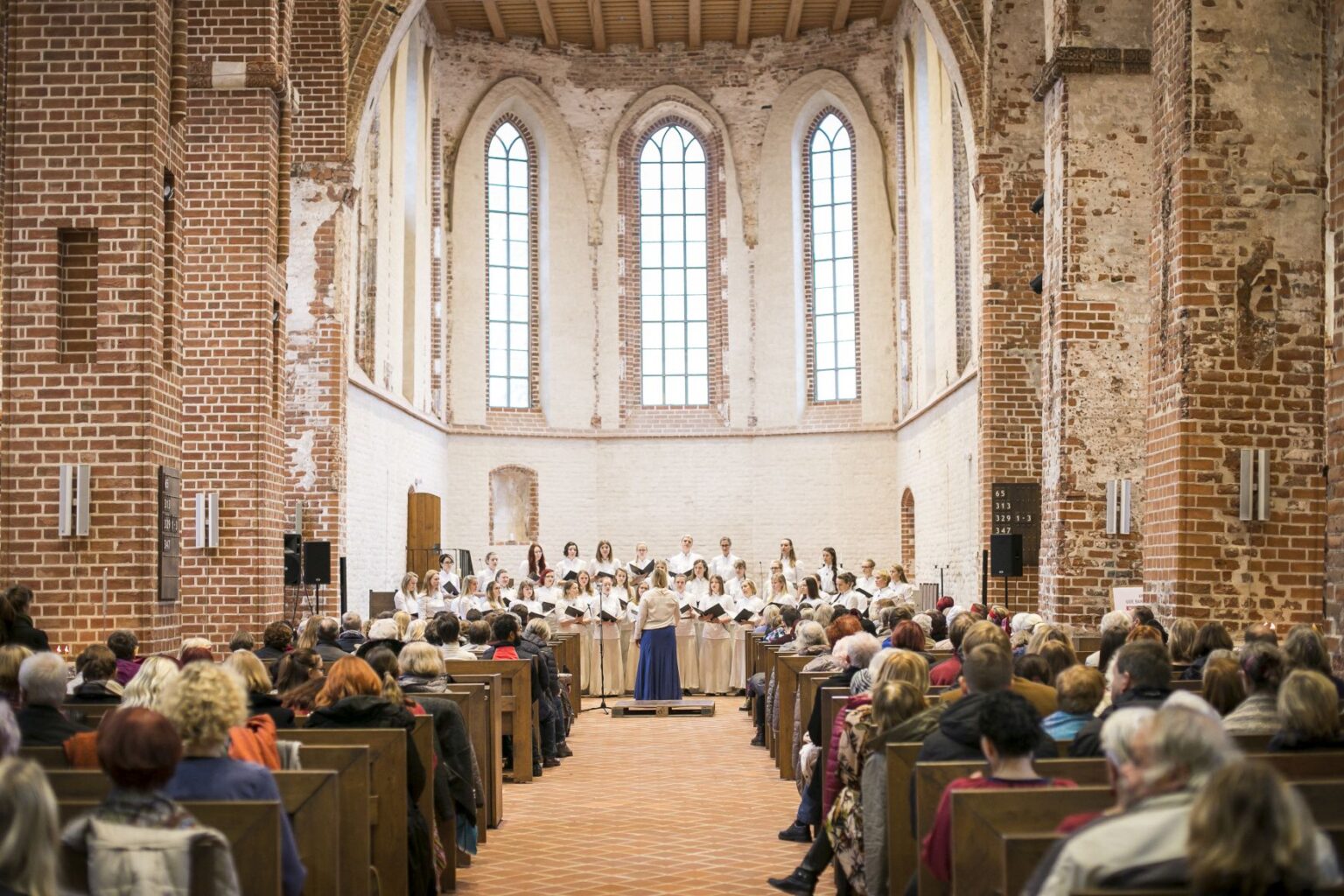
St. John’s Church and St. John’s Cultural Quarter
One of the most important buildings for the city is the St. John’s Church which is one of Northern Europe’s most unique examples of a medieval sacral building. Although the church has been repeatedly destroyed and reconstructed, its general mediaeval form has been preserved. A wonderful view of Tartu’s historical Old Town and St. John’s Cultural Quarter can be enjoyed from the church’s bell tower. St. Anthony’s Guild, uniting artists and craftsmen can be found in Antonius Courtyard located in the Cultural Quarter. In the year 1449, the extensive area from Väike-Gildi Street up to Lutsu Street belonged to St. Anthony’s Guild. Art and craft workshops operate in the three houses, also drawing inspiration from the craftsmanship of ancestors, but primarily the artists offer modern designs. Open-air events, fairs as well as concerts take place at the Antonius Courtyard, and a café-restaurant is open. Workshops are offered by Köösnerikoda (Furrier House), Maitseelamuste koda (House of Taste Sensations), Nahastuudio (Leather Studio), Jaanika kutsed (Jaanika’s Invitations) and Savikoda (House of Clay).
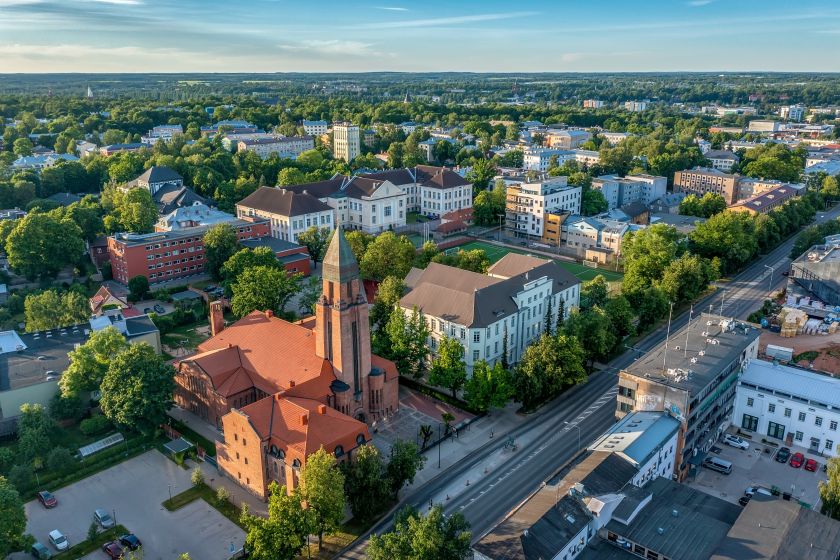
St. Paul’s Church
Unique and magnificent among the churches is Tartu’s St. Paul’s Church which is designed by Eliel Saarinen, one of the most recognised Finnish architects of the 20th century. It is an exceptional work among the architect’s creations as it has succeeded in blending the interior of a more geometrical National Romantic design with the more classical and monumental exterior. In World War II, the church burned, and its restoration under the conditions of the Soviet regime was difficult and time-consuming. The church was finally completed in 2015. The Art Nouveau style St. Paul’s Church is Estonia’s first new style and only Art Nouveau style sacral building, which is why it is a unique architectural monument across the entire Baltic Sea region and a fascinating tourist attraction.
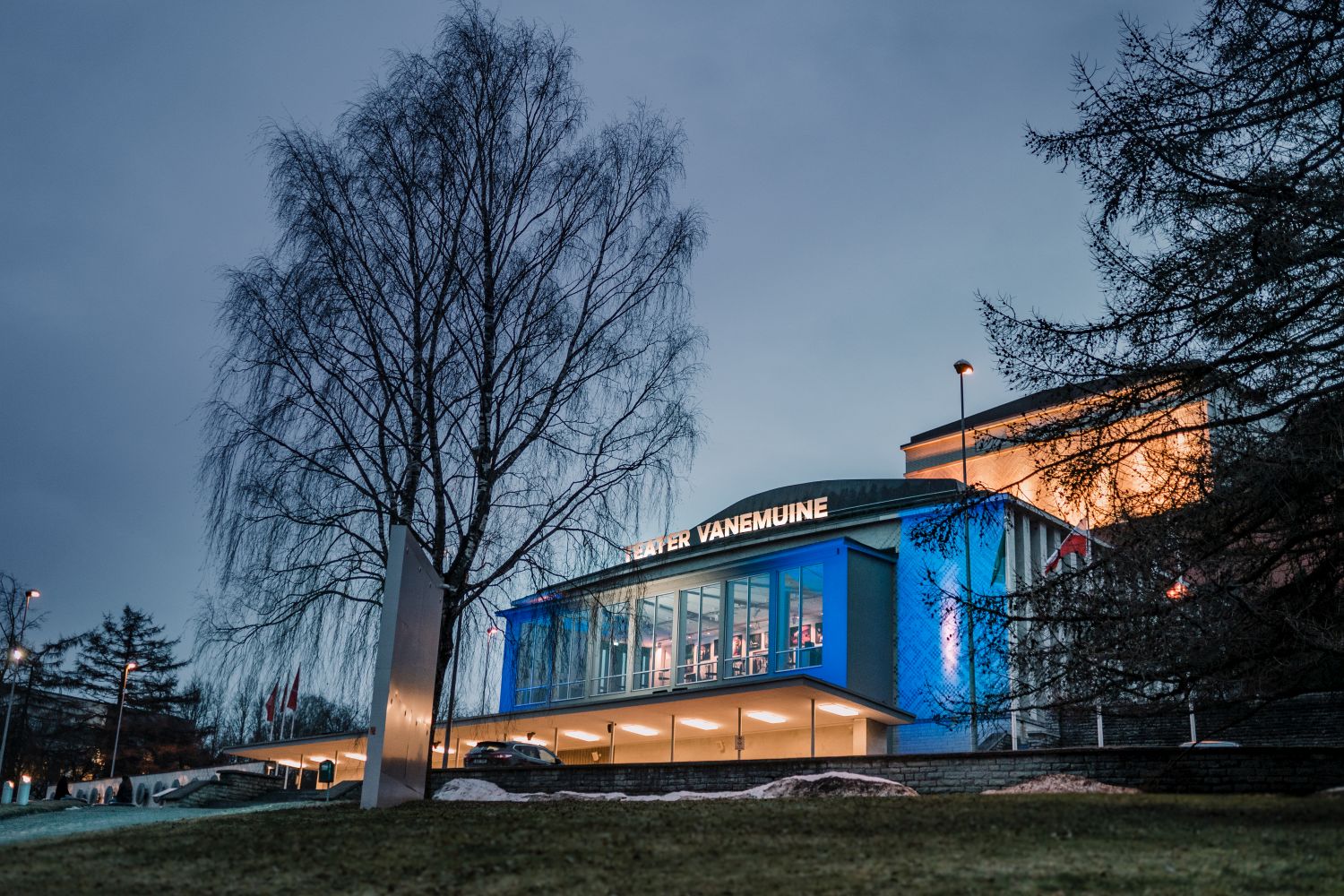
Theater
You will find Estonia’s oldest theatre as well as the only three genre theatre in the Baltics, Vanemuine Theatre, in Tartu. The theatre has three different buildings – the Grand Building of Vanemuine Theatre, the historical Art Nouveau styleSmall Building of Vanemuine Theatre, which was the first proper theatre building in the city, and the black-box type Harbour Theatre, a multifunctional theatre and concert facility, on the bank of the Emajõgi River. At Vanemuine, you will find all possible genres of the performing arts – from operas to classical dramas, from musicals to children’s plays, from modern ballet to symphony concerts. There are about fifty different productions in a variety of genres in the current repertoire. The theater season is from September to May, but considering the various summer projects, it can be said that the theater is open all year round. TheTartu New Theatre operates since 2011 in a medieval building which housed the Holy Spirit Church in the middle of the 13th century. Today, you can see productions of various genres and with different actors because anyone with a wild idea can make it happen there. The new theatre centre takes performing theatre in Tartu to a new level, which is definitely a worthwhile experience. Karlova Theatre is another small theatre that is nestled in a former house of worship – the present theater building was constructed according to the design of the legendary Arnold Matteus in the year 1931 as a prayer house for the Tartu Kolgata Baptist Congregation. In this building, inaugurated as a theatre house in 2014, you can enjoy verbal as well as musical productions, concerts and even exhibitions of Estonian artists.
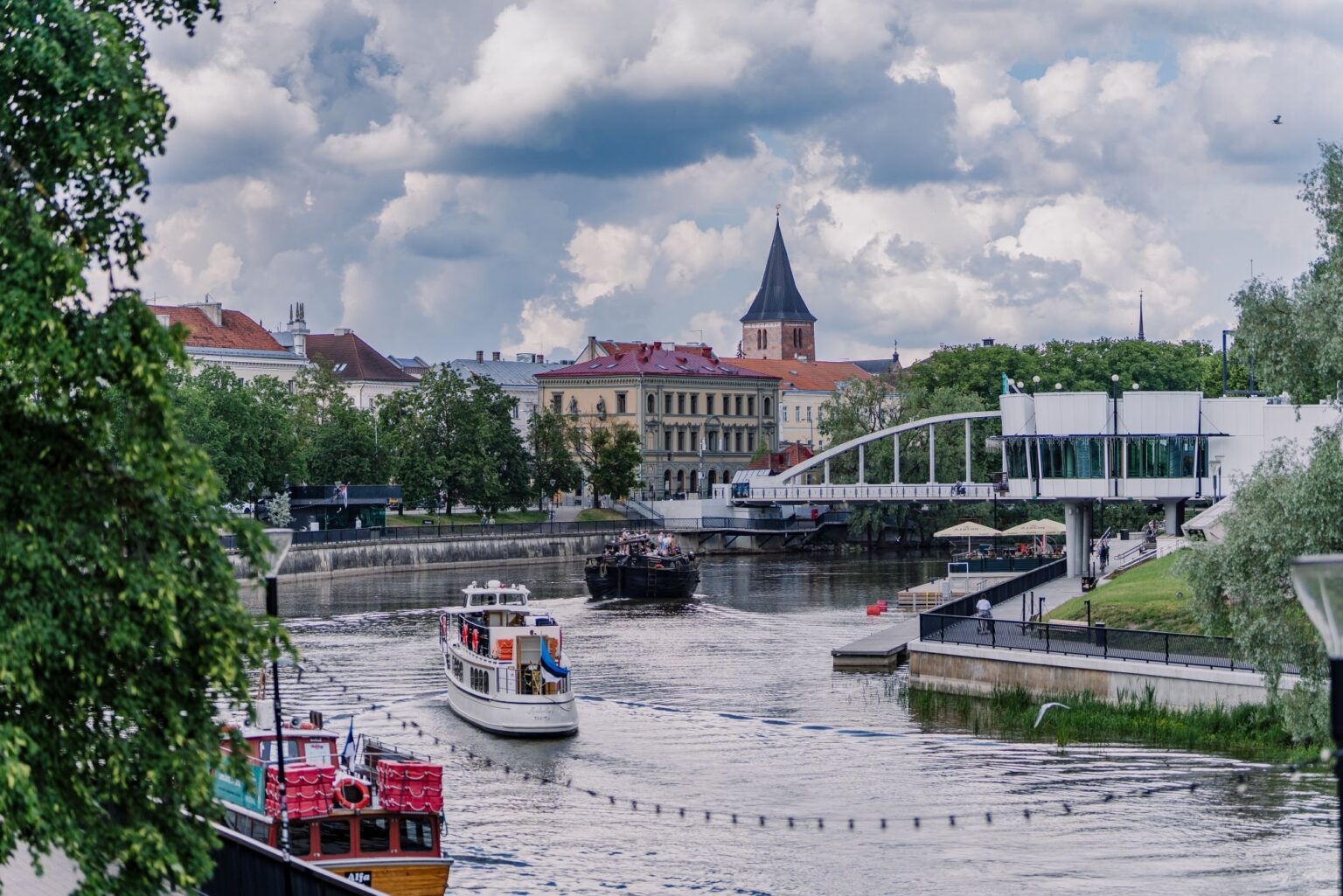
Manor House Architecture
Within the city, there are a number of manor houses that ooze history and culture, being noteworthy for both their architecture as well as history. Tähtvere Manor, currently lying within the city limits, used to be a part of Nõo Parish. In the Middle Ages, the manor belonged to the bishop of Tartu, and after the Second World War, the Estonian Institute of Animal Husbandry and Veterinary Medicine was located in the main building. Nowadays, the manor has become one of the academic buildings of the Estonian University of Life Sciences, therefore the building can be viewed and its architecture admired only from the outside. Karlova Manor was founded in the year 1793 when it was separated from Tähtvere Manor. In 1828, the manor came under the ownership of Thaddeus von Bulgarin who had the building expanded to twice its original size, and it became the centre of the local Russian cultural life of the time. The manor was special due to its abundant collection of art, books and rarities as well as the largest collection of maps in the entire Russian Empire. At the moment, the interior of the manor is partially renovated, and guided tours take place with tour guide Elina Aro when booked in advance. Ropka’s single-storey stone manor house was built in the first half of the 19th century. The buildings of Ropka Manor lie on either side of Ropka Road, the structures still remaining of the complex are the farmhand’s house, cattle barn, converted stables that belong to AS Eviko, granary, cellar and the manor park. There are three ponds in the park, and there are plans to restore one of these. The building is privately owned and can only be viewed from the outside. On the border of Tartu city and Tartu Parish stands Raadi Manor, the glory days of which can be considered to fall into the first part of the 19th century when the owners associated closely with renowned musicians and people from the art circle. The manor stood out among others due to its rich collection of art, its library, and its salon evenings. The manor’s water tower, ice cellar and the restored enclosure wall as well as the natural Raadi Lake in the centre of the manor complex and the restored manor park – all are open to visitors.
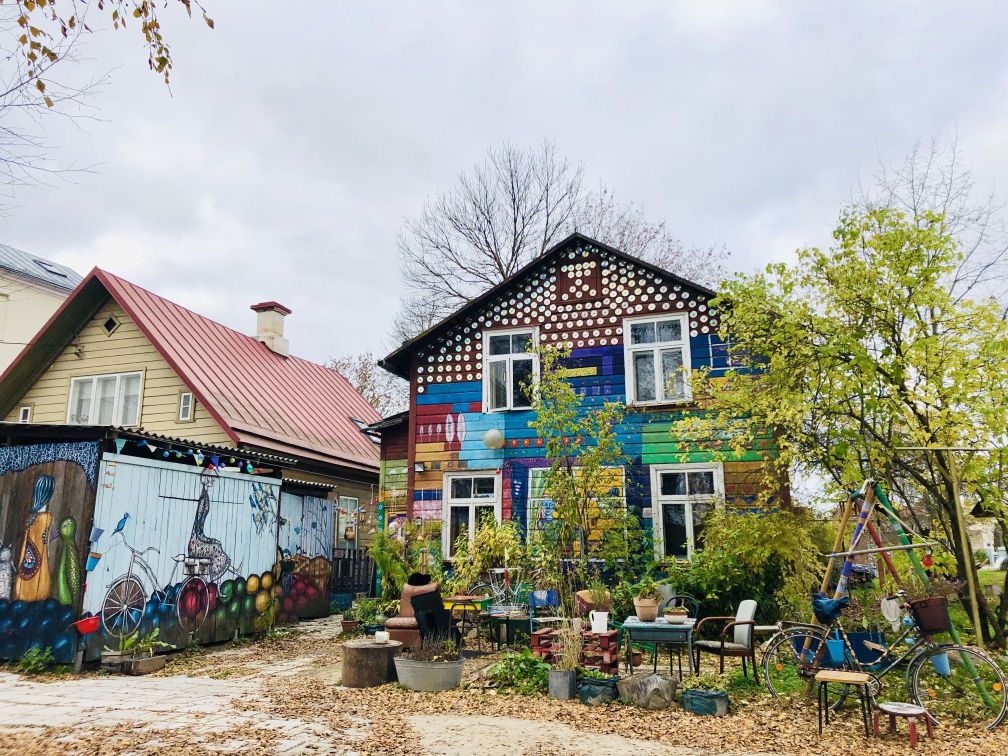
Wooden Neighbourhoods
Formed in the middle of the 18th century, Tartu’s historical neighbourhood Supilinn (Soup Town) is a one-of-a-kind place, a former slum and suburb. The local unique wooden houses in a variety of colours, green gardens, the Emajõgi River and the frog pond all create a place where the city meets the country, constituting to the identity and a sense of community characteristic of the residents of Supilinn. All this is enriched by the village swing, the legendary Herne (Pea) Shop, the bakery Saiasahwer (Bread Pantry), unique street art, and the annual spring-time neighbourhood days. The wooden houses on Lutsu, Jaani and Lai Street are Tartu’s oldest wooden houses that were built in the 18th century. These are single-storey baroque-style houses with hip and half-hip roofs and early classicist floor plans, and where the mantle chimneys have remained intact as well. All the buildings remained untouched by the great fire of 1775. At the address Lutsu Street 2, in the Toy Museum’s Theatre House, a medieval heat storage hypocaust furnace still exists for the visitors to have a look at. In addition, the building also exhibits Tartu’s oldest original portal and door. Historical wooden buildings can also be found in theKarlova neighbourhood where annual Karlova Days are organised to introduce the large wooden neighbourhood during an entire week.